Today’s users don’t follow straightforward customer journeys. We exist in a multi-channel, cross-device world.
Users are likely to begin their digital journeys anywhere, at any time, move in any direction, further and backward, drop off and resume, at their will.
Each point in these journeys are opportunities for you to engage with them and nurture them towards a conversion event. For digital marketers like you, who are committed to driving business goals through effective marketing, the 4 Rs of marketing is indeed the mantra to live by.
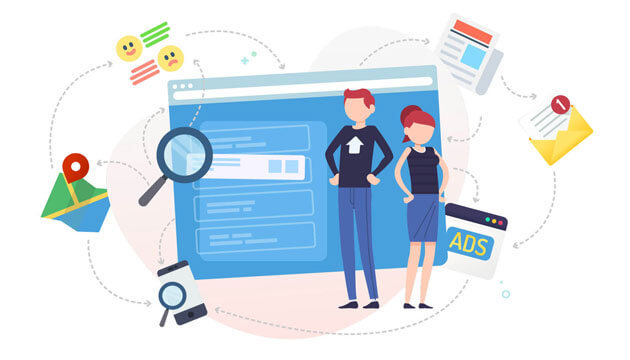
When it comes to marketing channels, you are spoilt for choice. With so many options available, (email, SMS, push notifications, in-app messages, web messages, browser push notifications), it is natural to get overwhelmed.
While AI-driven intelligent marketing can certainly help you pick the most suitable medium to help you connect with your user through hyper-personalised and relevant content, it is important for you to understand the mutually exclusive use and impact of each channel.
We compared push notifications with SMS and in-app messages earlier. Let’s now talk about how push notifications weigh up against a more traditional channel of engagement – emails.
Push notifications have emerged as one of the most powerful mobile marketing channels today. On the other hand, emails, the oldest digital marketing channel, (it recently turned 40), is still considered an evergreen communication channel with average open rates of 18%, across industries.
Both the channels have their unique strengths and positions in your digital marketing mix, and your understanding of how to leverage them optimally is critical to the success of your overall marketing efforts.
What are the Key Differences between Email and Push Notifications?
You can’t use the same approach with emails and push notifications. Here are 5 factors that determine which channel works best, when and why:
1. Length of your message
This is the foremost factor that helps you choose between the two channels. Emails can be as long or as short as you want, but you can fit only up to 50 characters in a push notification. So, let the length of your marketing message guide you.
An out-for-delivery update can be a push notification, but the transaction receipt should be shared through email. Newsletters, blogs, account statements, sign up forms, and similar content is served best as emails. Shorter messages like promotional offers create more impact when sent as push notifications.
Remember that regardless of the length of your marketing message, your content and creatives need to create enough intrigue and impact to nudge your users towards further action.
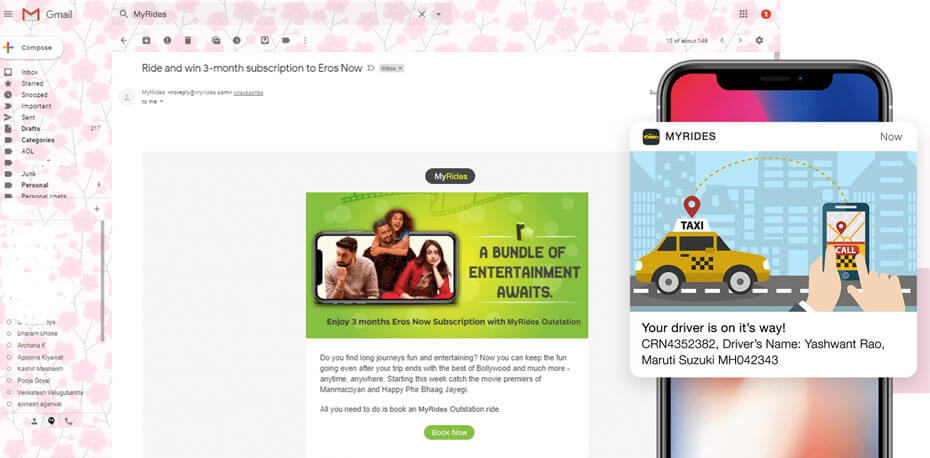
2. Urgency of the message
Some content that you send requires immediate attention or action from your users. Say, a ride booking confirmation, out-for-delivery update, payment status notification, change or a flash sale that is available for a few hours.
Push notifications as a channel are designed to encourage and drive user actions, delivered at the right time and place.
On the other hand, FYI-type messages like a blog post update, newsletters, account statements, etc. that do need your users to view them immediately are served up best through emails.
Your users view or react to push notifications way more quickly than emails. Hence, urgent messages are best delivered as push notifications, while the not-so-time sensitive ones can go as emails.
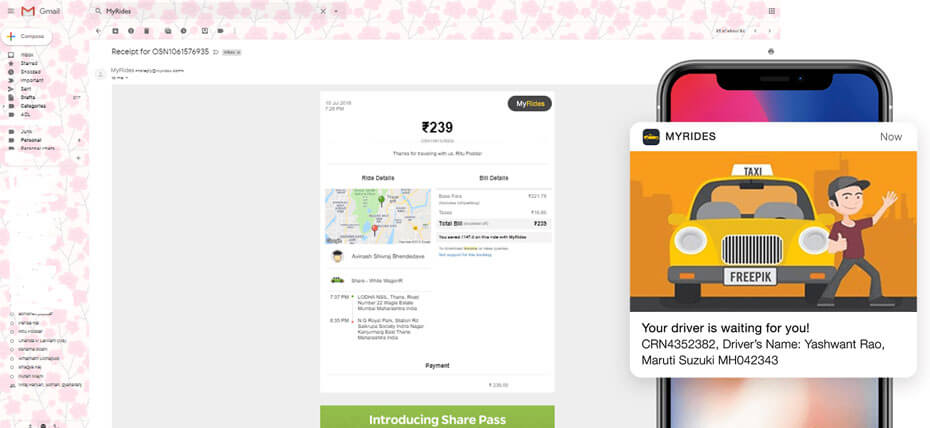
3. Timing of The Campaign
Users have their smartphones with them all the time, which implies push notifications can be delivered at any time. But, that’s not what you do because poorly-timed notifications can interrupt your users, annoy them, and turn them off your app completely.
You can send an email campaign at 7AM and expect your users to read it when they check their inbox later, but you can’t do that with push notifications. Hence, use the timing of the campaign to determine which channel to use.
Related: Smartech’s AI-powered Send Time Optimisation
4. Intent of the campaign
Another difference between emails and push notifications is the intent of the campaign.
While both channels of engagement can be used to alert customers about a sale, or feature update, push notifications prompts additional action (app launch through the CTA) while emails can serve complete content by themselves.
If your intention is to drive user action, then push notifications work better. The response time to emails is likely to be much longer than push notifications, so you need to identify what channel would give you a better marketing ROI based on your campaign intent.
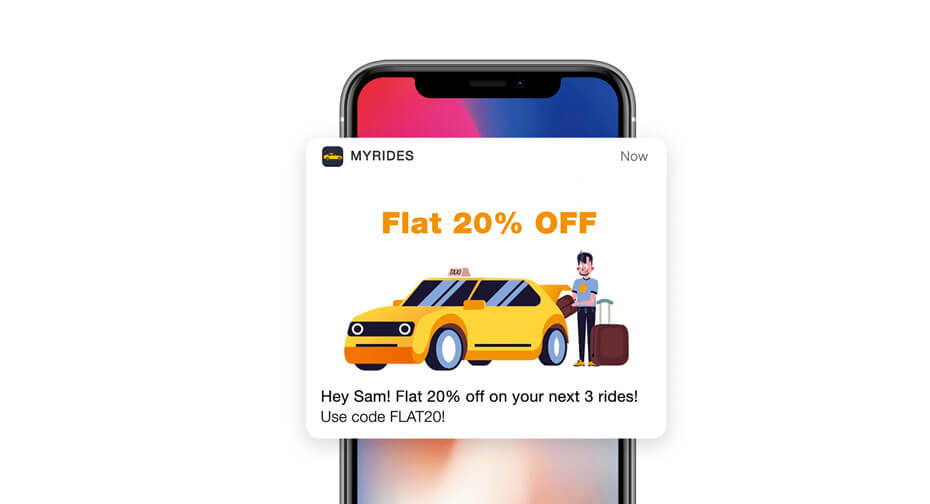
5. Degree of personalisation
While both emails and push notifications can be personalised, the degree varies.
While emails’ send time and subject lines can be personalised, push notifications offer higher personalisation opportunities. You can use rich media features like large images, carousel, and audio/video/gif in push notifications. Also, by leveraging your users’ geolocation information and app behavioural data, push notifications can be highly personalised in terms of time of delivery (real-time geo-targeting) and tailor-made behaviour-based content.
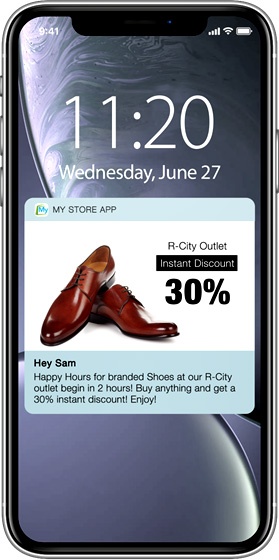
As marketing channels have evolved over time, your users expect different things from emails and push notifications. For years, email was used tactlessly to spam users with irrelevant impersonal messages because of which most users now just skim through the promotional emails and delete them without reading.
Modern users do not expect emails to be personally relevant, and hence, hardly engage with them. However, they do expect push notifications to be engaging and relevant.
Push notifications and emails are fundamentally different communication channels and they have to have different strategies to avoid the risk of alienating your customers with irrelevant content that negatively affect customer relationships. The key is to understand how each channel caters to the use cases, and integrate the right fit in the right places in your digital marketing strategy.
Get in touch with us to know more about how you can drive user engagement through AI-powered multi-channel marketing automation.
 Growth, decoded: Agentic Marketing Predictions 2026 for consumer markets. Read the report now.
Growth, decoded: Agentic Marketing Predictions 2026 for consumer markets. Read the report now. 








